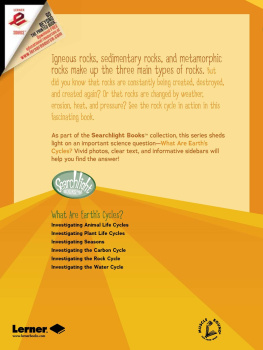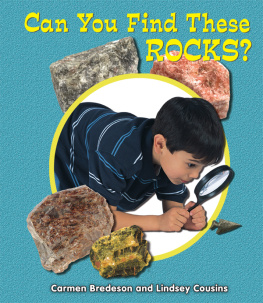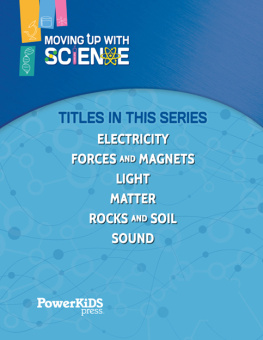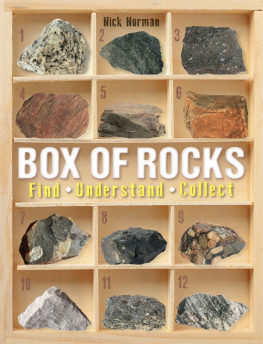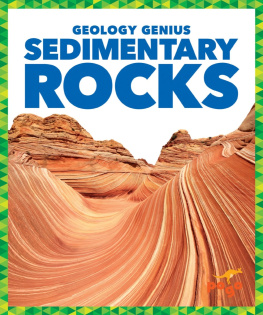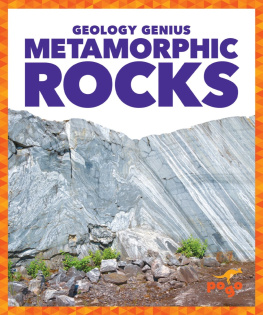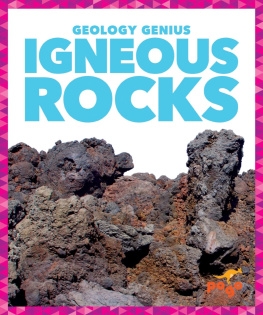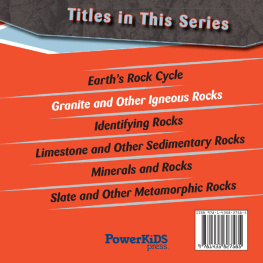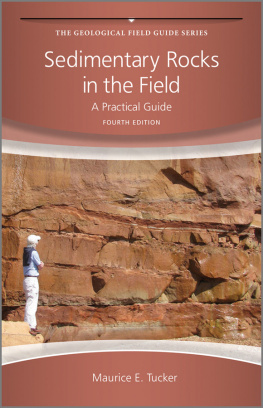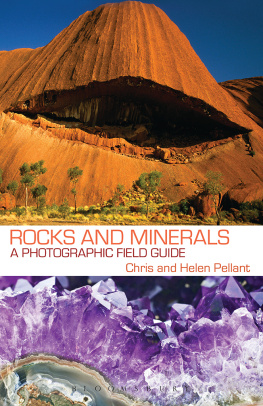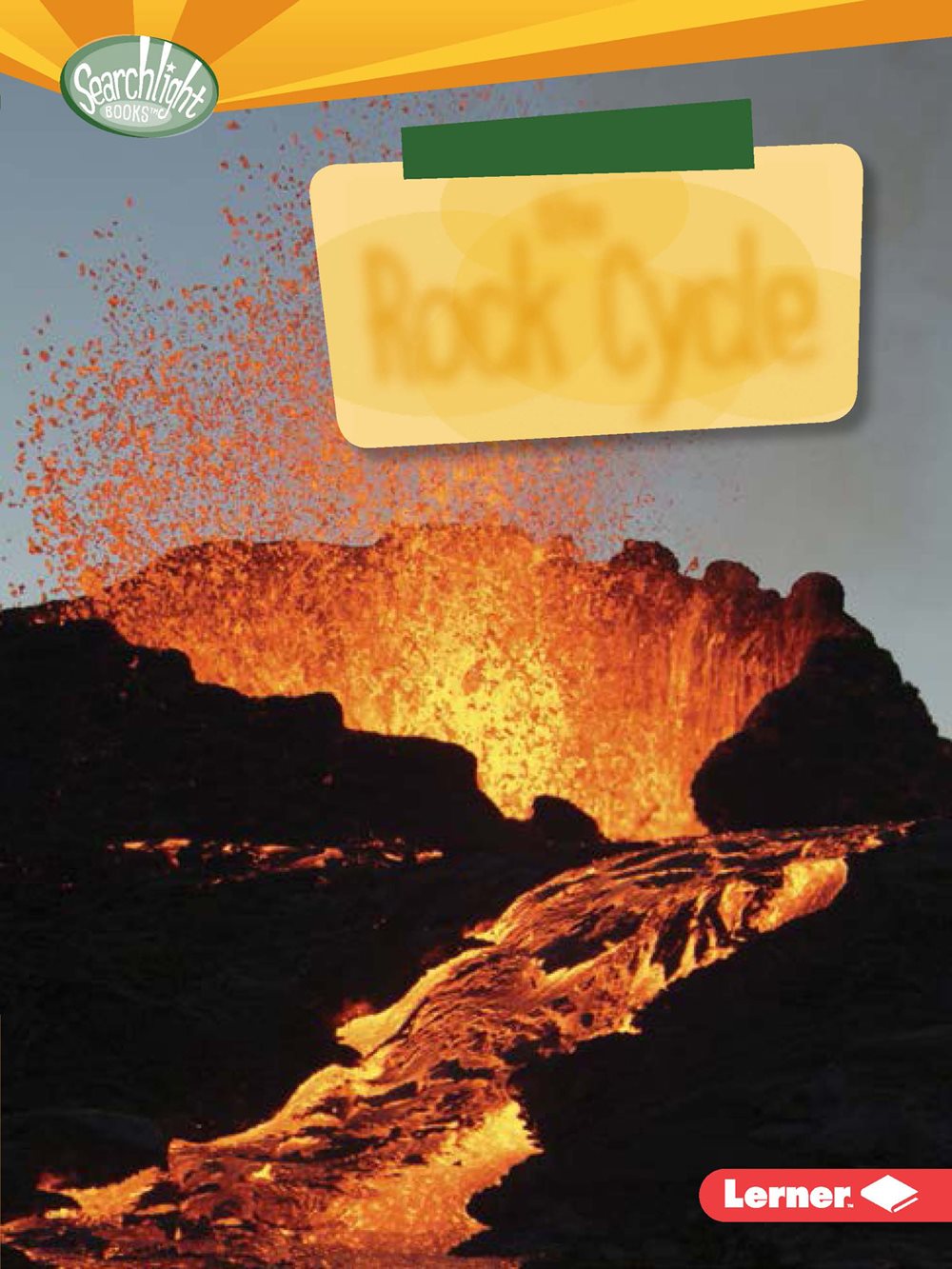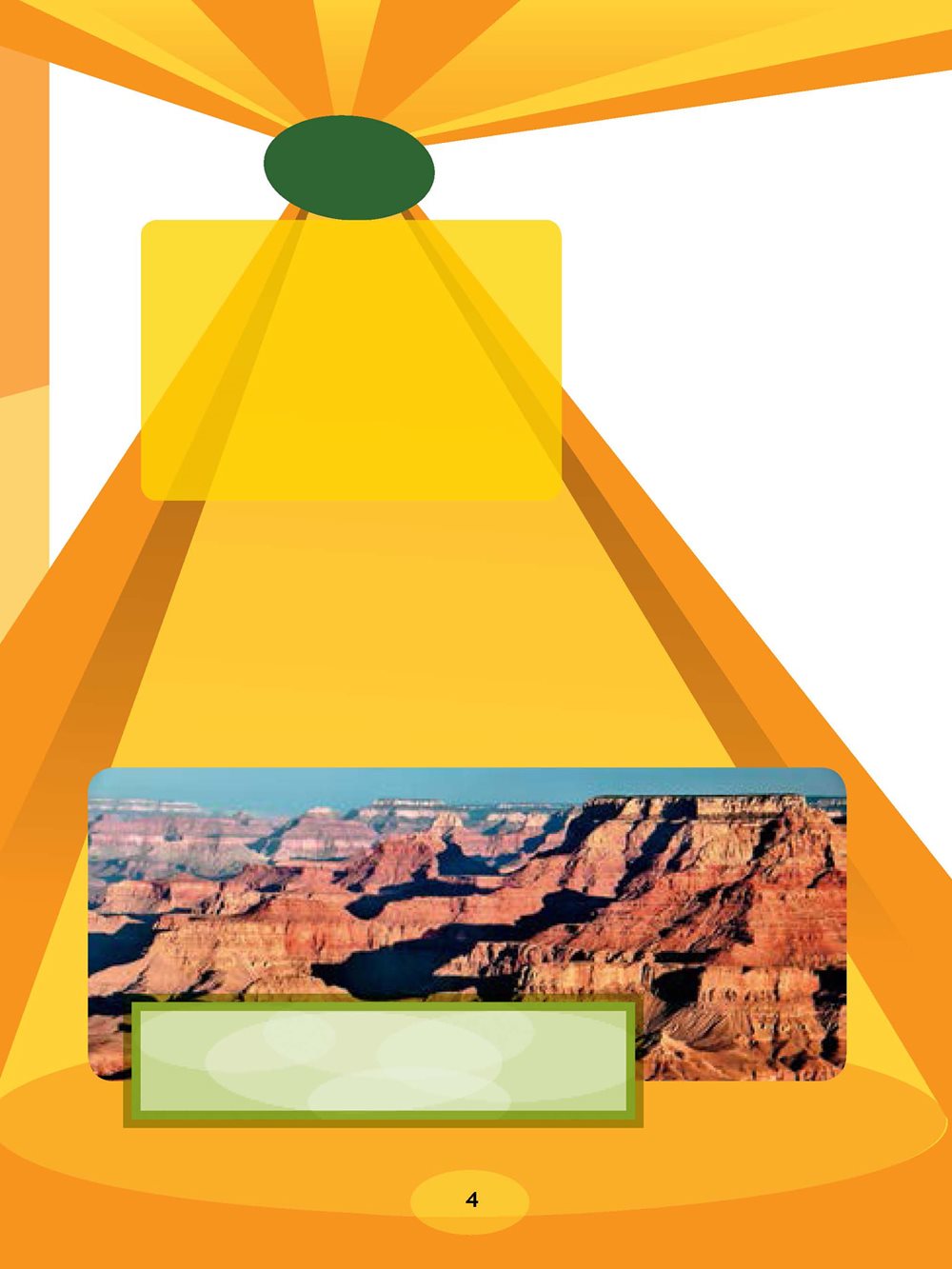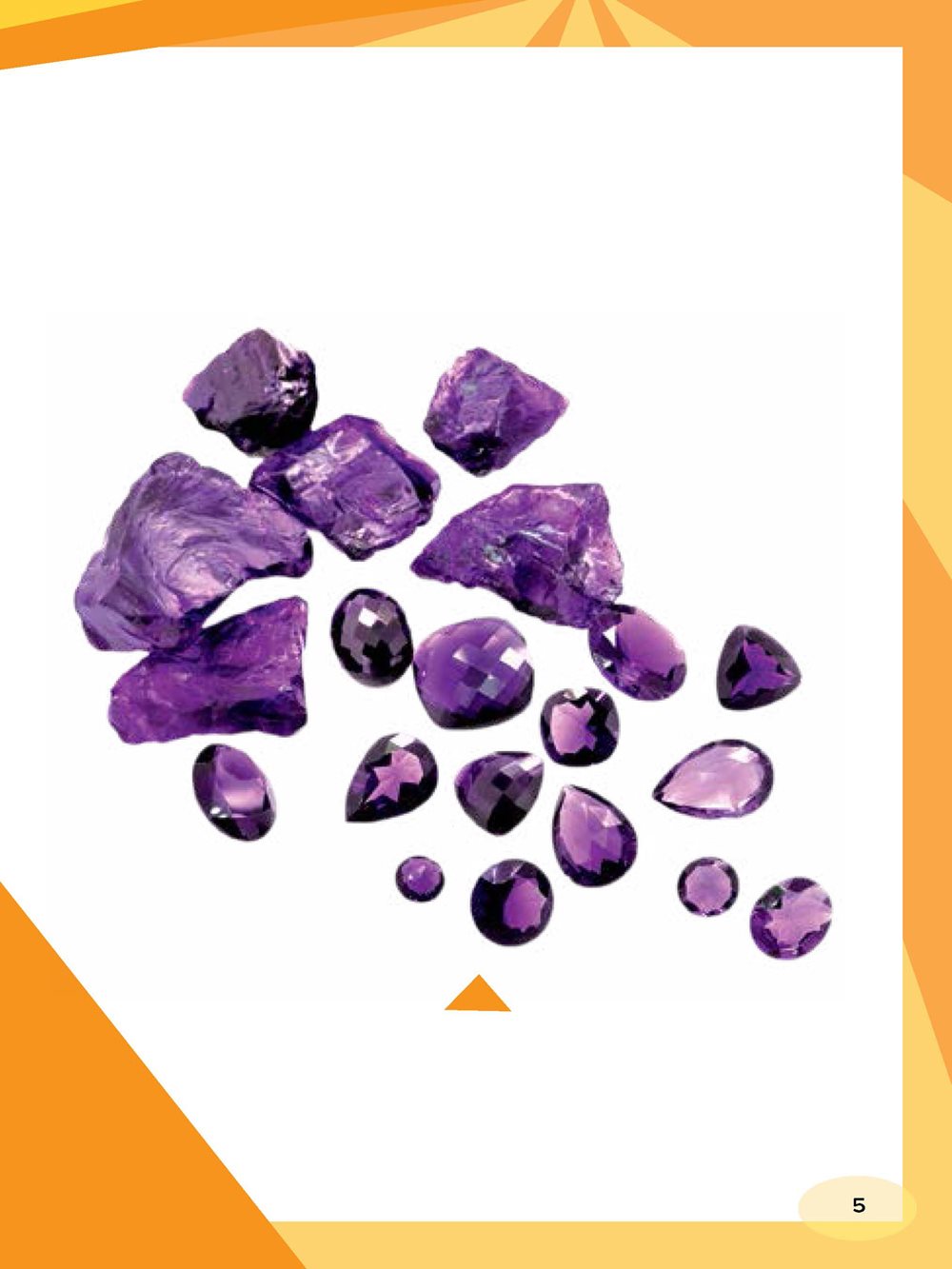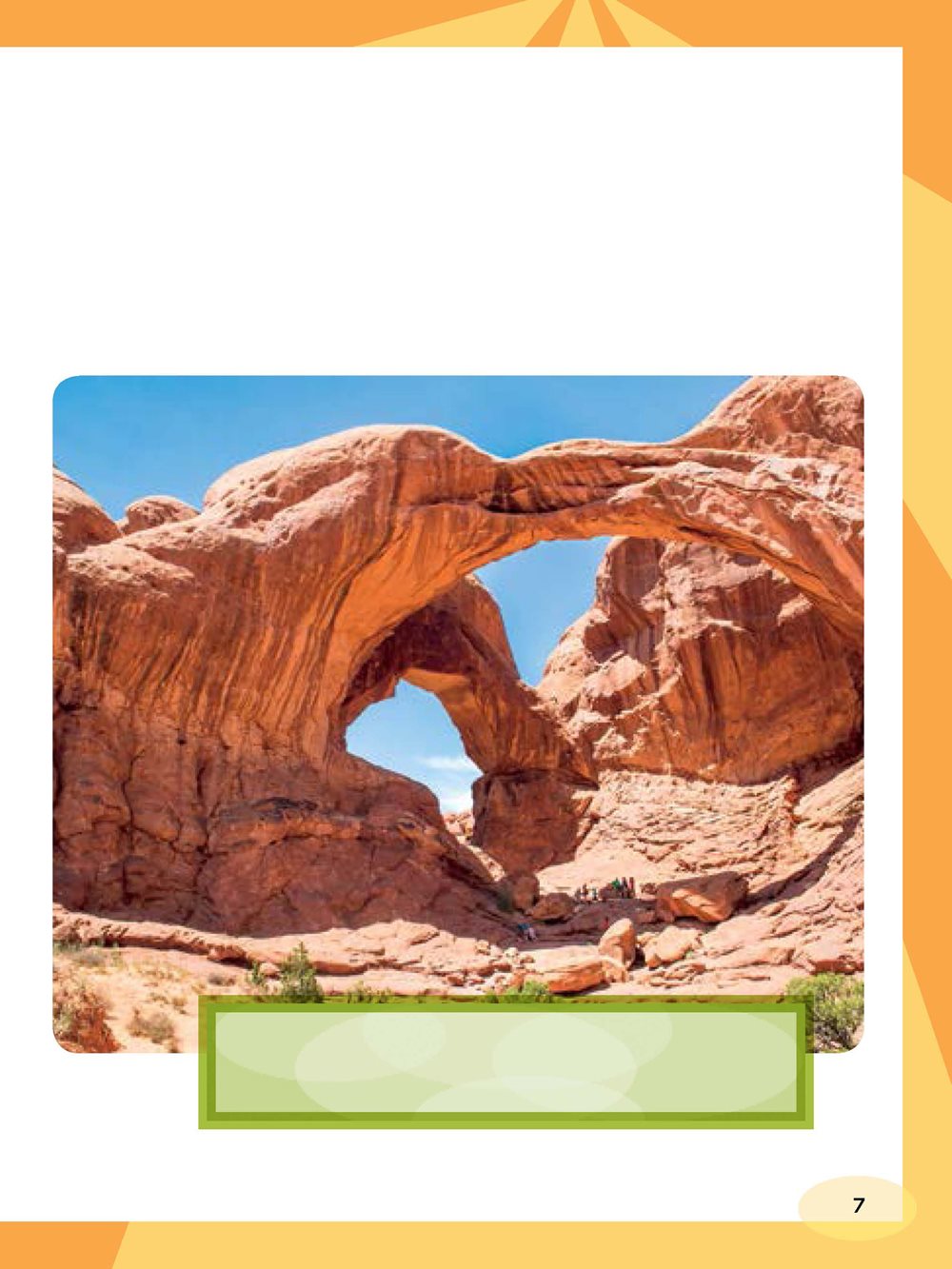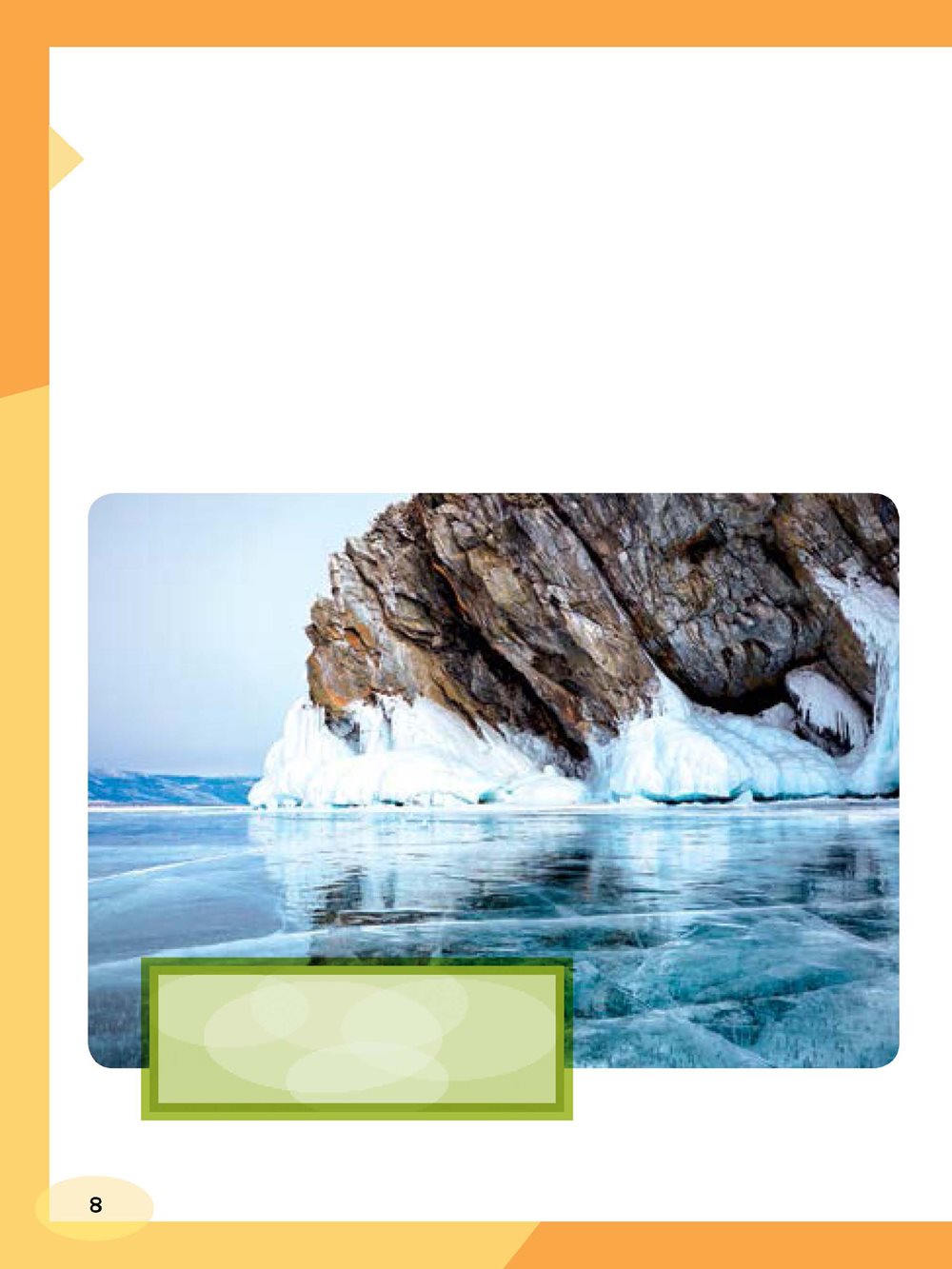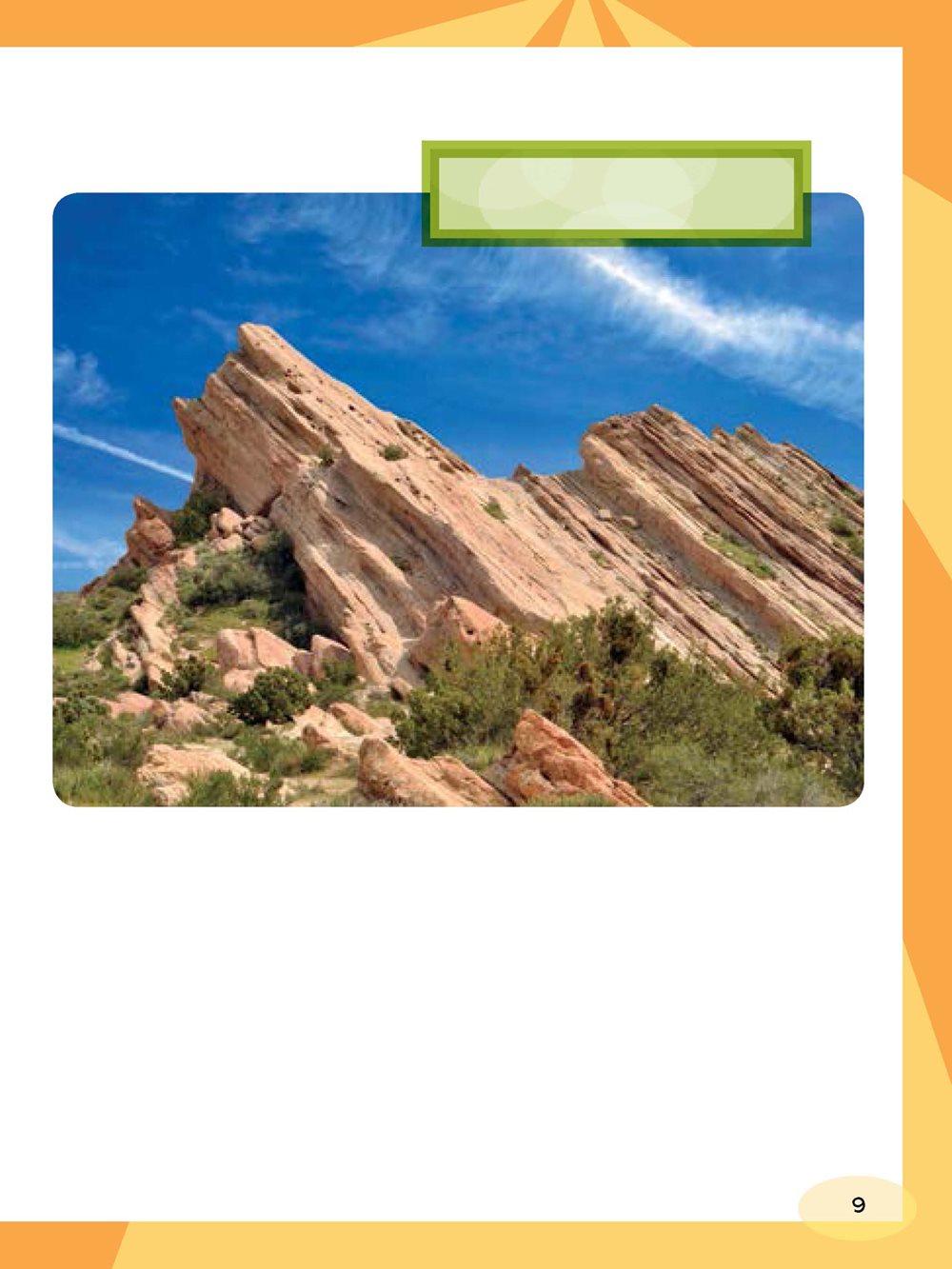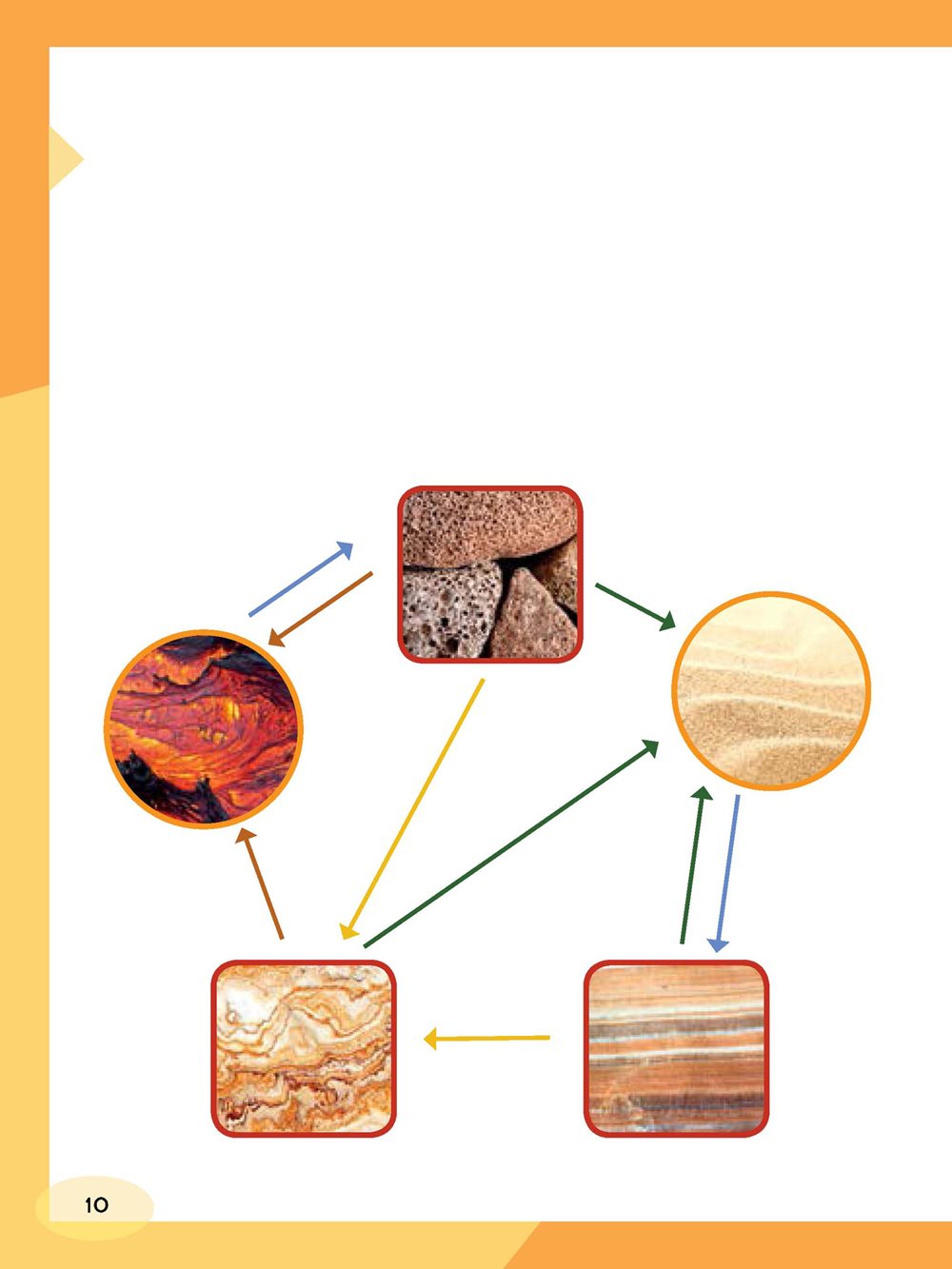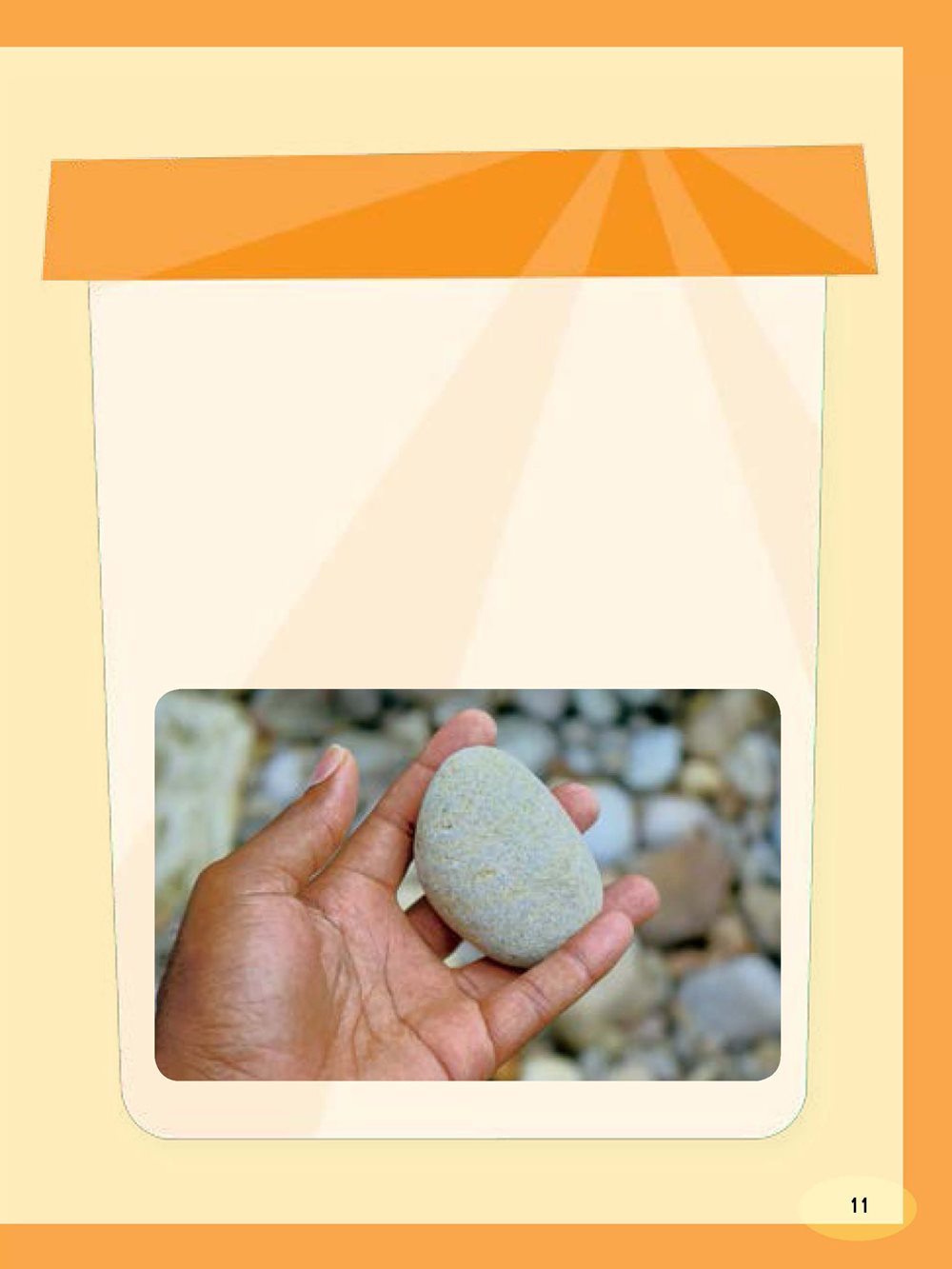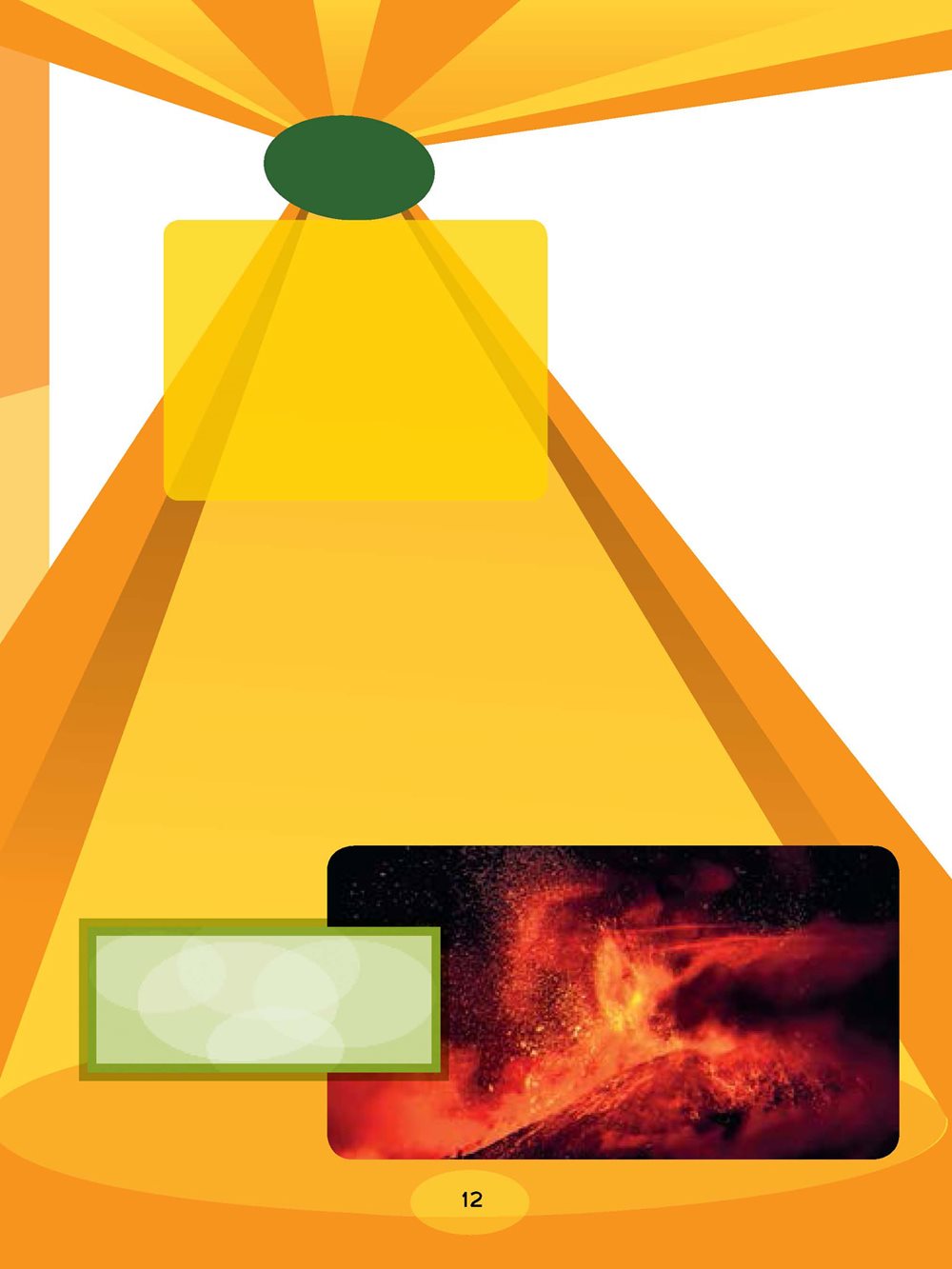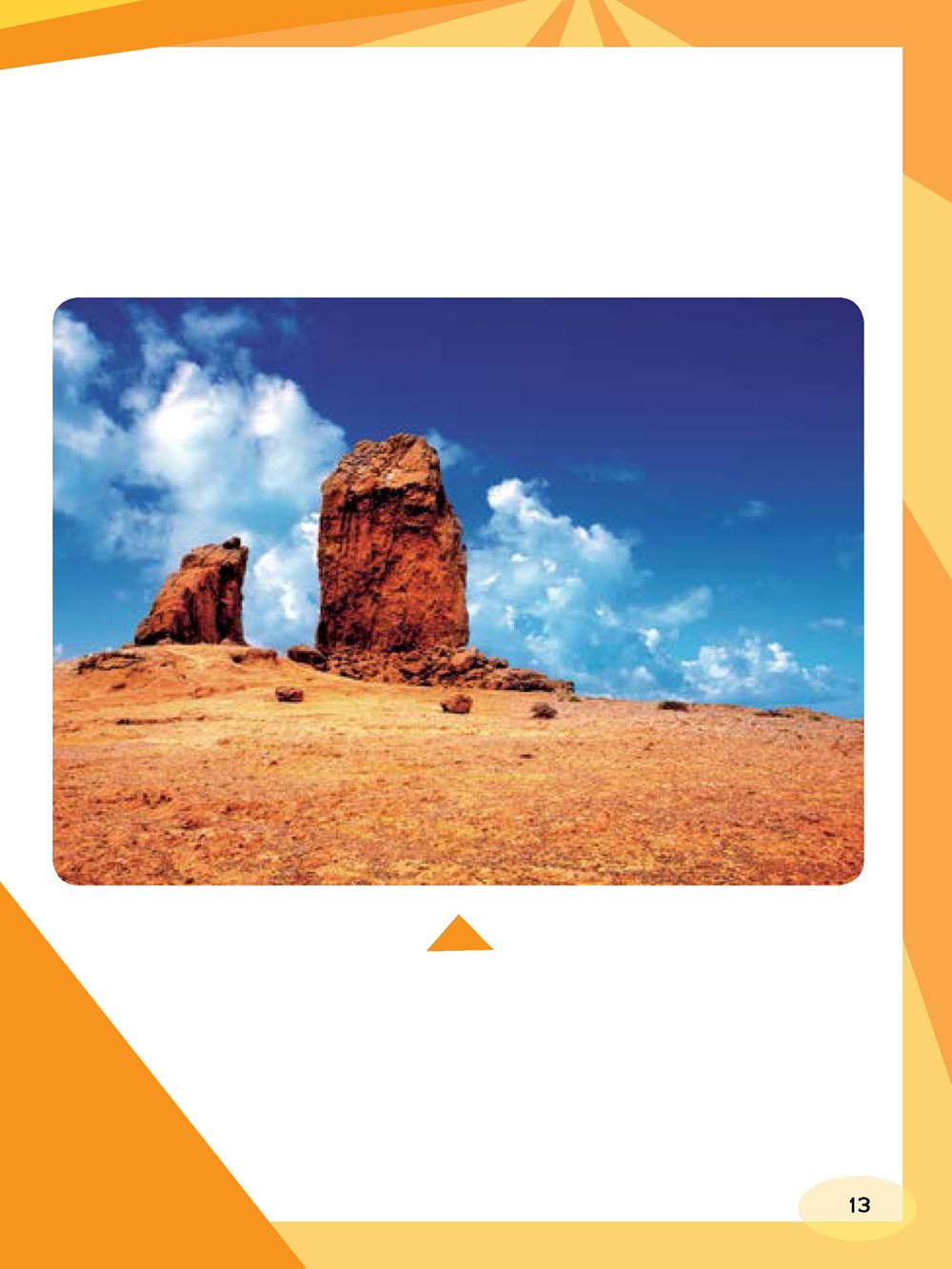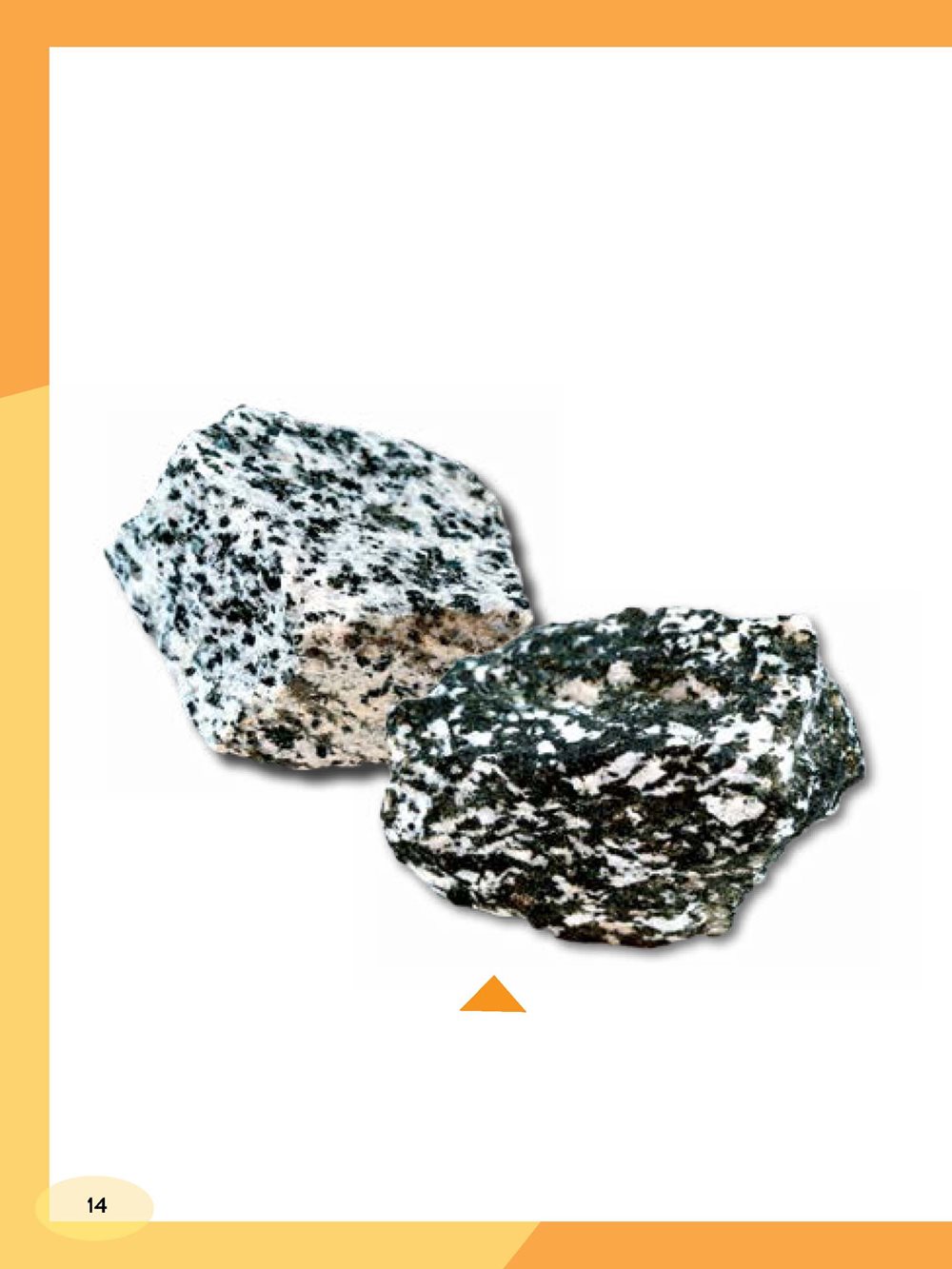Investigating
the
Rock Cycle
Mary Lindeen
Copyright 2016 by Lerner Publishing Group, Inc.
Content Consultant: Alan Boudreau, Professor of Earth and Ocean Sciences,
Duke University
All rights reserved. International copyright secured. No part of this book may
be reproduced, stored in a retrieval system, or transmitted in any form or by any
meanselectronic, mechanical, photocopying, recording, or otherwisewithout the
prior written permission of Lerner Publishing Group, Inc., except for the inclusion of
brief quotations in an acknowledged review.
Lerner Publications Company
A division of Lerner Publishing Group, Inc.
241 First Avenue North
Minneapolis, MN 55401 USA
For reading levels and more information, look up this title at
www.lernerbooks.com.
Library of Congress Cataloging-in-Publication Data
Lindeen, Mary.
Investigating the rock cycle / by Mary Lindeen.
pages cm. (Searchlight books. What are Earths cycles?)
Audience: 811.
Audience: Grade 4 to 6.
Includes bibliographical references and index.
ISBN 978-1-4677-8058-2 (lb : alk. paper) ISBN 978-1-4677-8337-8 (pb : alk.
paper) ISBN 978-1-4677-8338-5 (eb pdf)
1. RocksJuvenile literature. 2. Geochemical cyclesJuvenile literature.
I. Title.
QE432.2.L565 2016
552'.06dc23 2015000954
Manufactured in the United States of America
1 VP 7/15/15
Contents
THE ROCK
CYCLE
Chapter
THE ROCK
CYCLE
Rocks are everywhere on
Earth. They are at the bottoms
of lakes and oceans. They are in
the soil. They are even in our streets.
Where do all these rocks come from?
The Grand Canyon is a beautiful rock
formation in Arizona. What are some
other places where you might find rocks?
Most rocks are made of minerals. Minerals are solid
materials that do not come from plants or animals.
Rocks are usually made up of more than one kind
of mineral.
AMETHYST IS A MINERAL THAT IS
OFTEN USED IN JEWELRY.
THESE ROCKS IN SCOTLAND WERE FORMED
MILLIONS OF YEARS AGO.
Rocks are constantly being created, destroyed, and
created again. This natural process is called the rock
cycle. It has been going on for billions of years.
Rocks are changed by weather, erosion, heat, and
pressure. These forces destroy rocks. But the rocks
do not go away. They just get broken apart or moved.
Destroyed rocks will become new rocks in different
places. Earth recycles its rocks!
Erosion is the gradual wearing away of a
substance by wind, water, or ice. Erosion caused
these arches to form over millions of years.
Rocks Change
Rain and ice break rocks apart. Chemicals weaken rocks.
Gravity pulls rocks down. Rocks crack against other
rocks. Wind and water move pieces of rock.
Extreme heat changes rock. Rock gets buried deep
under Earths surface. Heat makes the rock soft. It
melts and mixes with gases. New rock forms when the
melted rock cools again.
Water can get into cracks in
rocks. When the water freezes,
the ice expands. Over time, this
can cause rocks to break apart.
Pressure inside Earth changes rocks. Pressure and
heat together make rocks squish instead of break. The
minerals in the rock get pressed together very tightly.
This changes the minerals. The minerals get stretched
and pulled. They flatten out. Pressure can also push
rocks up. Rocks that were buried get moved to Earths
surface. Then erosion wears them down again.
These rocks were pushed up
from below Earths surface.
Types of Rocks
There are three main kinds of rocks. They are igneous,
sedimentary, and metamorphic. Each kind is formed by
the rock cycle. During this cycle, one kind of rock can
change into another. But these changes do not happen
quickly. Change can take millions of years.
THE ROCK CYCLE
igneous rock
erosion
sediment
pressure
and
crystal
formation
erosion
sedimentary
rock
heat and
pressure
metamorphic
rock
melting
heat and
pressure
erosion
magma
cooling
melting
See the Cycle
The rock cycle creates three main categories
of rock. But rocks can be categorized in other
ways too. You can group them by shape or
color, for example.
See if you can find ten different rocks outside.
Look at them closely. Divide the rocks into
groups. Make a label for each group. For
instance, one group could be Shiny Rocks and
another could be Dull Rocks. Explain why you
put each rock into its group.
Chapter
IGNEOUS
ROCKS
Even on a cold day, Earths
inner layers are hot. They
are hot enough to melt rock.
This melted rock is called magma.
Magma rises toward Earths surface
because of changing pressure inside the
planet. Magma cools and hardens as it rises.
The red substance in this
photo is melted rock. What
will happen to this melted
rock after it cools?
Hardened magma becomes igneous rock. Most
magma cools and hardens belowground before it reaches
the surface. This magma fills cracks in Earths crust.
THIS ROCK FORMATION IN SPAIN
IS MADE OF HARDENED MAGMA.

